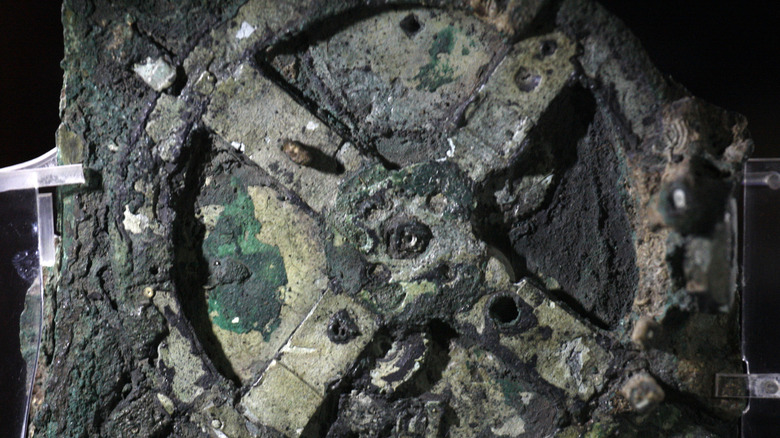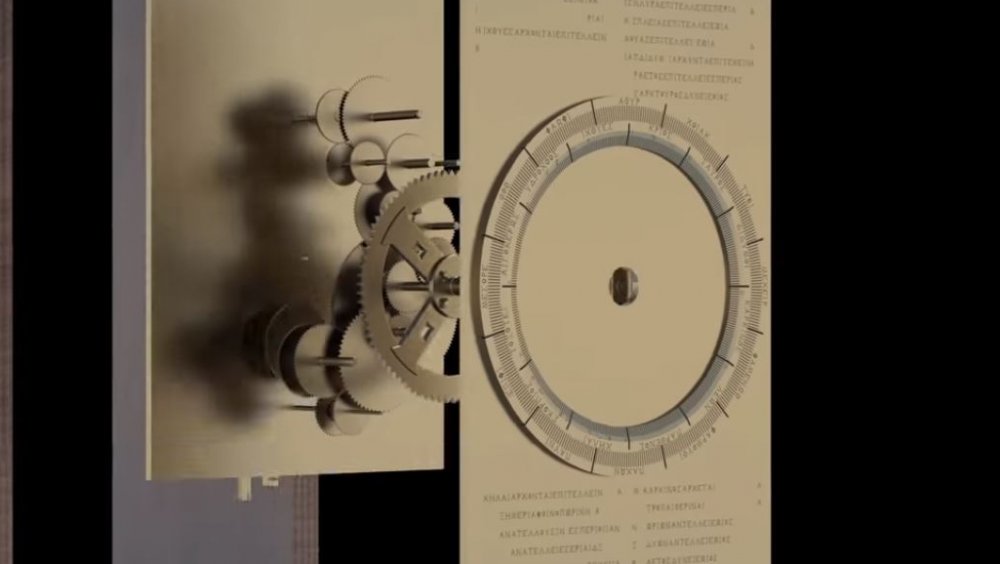The Truth About The Computer Built By Ancient Greeks
With a name like the"Antikythera Mechanism," the world's oldest clockwork, analog computer sounds like a fictional device from an alternative, steampunk history. It was fished up from a very real ancient shipwreck, however, found off the coast of the Greek island of Anitkythera in 1901, and dates back to as early as the 2nd century AD. This means the device is over 1,000 years older than anything even remotely similar in complexity, such as the clock towers developed from the 14th to 16th century in Europe, as described in Communications of the ACM magazine.
At first glance, in its current state the Antikythera Mechanism looks like some kind of rock with etchings on it. In reality it's a shoebox-sized astronomical calculator full of over 30, meticulously crafted bronze gears shattered into 82 pieces, as Live Science describes, and a crank that can be rotated to predict the positions of the stars, sun, and moon over the course of an entire year. Dives to the site of the shipwreck have continued all the way till 2019, and thanks to x-ray scanning we can see writing on the machine, and an array of meticulously crafted, tiny teeth that interlocks each of its gears.
Essentially, the Antikythera Mechanism is a quick fix for doing a lot of painful calculations by hand, as Vox describes, especially for nautical navigation. But the machine itself was apparently quite complex to use, and even difficult to understand. And so, it came equipped with a user manual in the form of tiny inscriptions written along its exterior.
Part clock, part calculator, all genius
In total, the Antikythera Mechanism is an absurdly complex piece of engineering that includes orbs that would have moved across the face of the machine to show the motion of planets in the night sky and the position of the sun and moon relative to the 12 constellations of the zodiac, a tiny ball that rotated through the phases of the moon, an entire, 365-day solar calendar, a lunar calendar that includes a 19-year lunar cycle, forecasts regarding eclipses, and, amazingly, a separate dial that calculated the time between major Greek sporting events such as the Olympics.
It's stunning to think of the technological prowess and sheer intellect that went into building the Antikythera Mechanism, and it's equally fascinating to think of all of the unanswered questions behind it. According to the Smithsonian Magazine, Roman statesman Cicero reported that 3rd century BC Greek mathematician Archimedes apparently owned such a device, a full 500 years before the apparent age of the Antikythera Mechanism. If so, it's possible that the device could have been based on an even earlier machine used by the ancient Babylonians. It stands to reason that while the construction of such a machine would have been daunting, ancient people wouldn't have gone through the trouble of building such a device if it was the only one in existence. Losing it would have been too devastating of a loss.
Regardless of the specifics behind the Antikythera Mechanism's use and origins, the device — the world's oldest analog computer — proves that human ingenuity has been a part of our DNA since the dawn of recorded history, and before.

